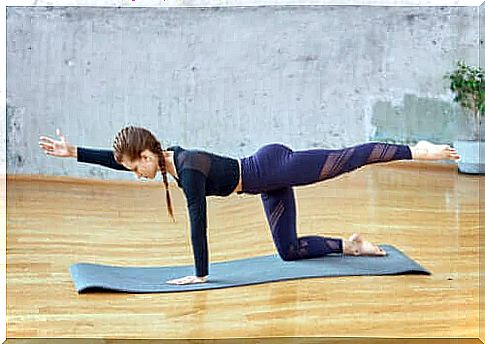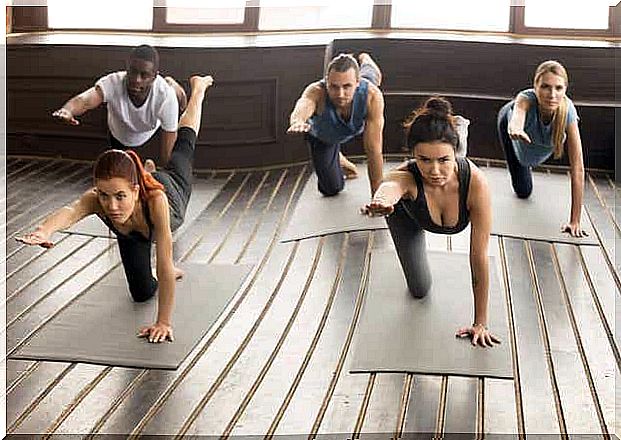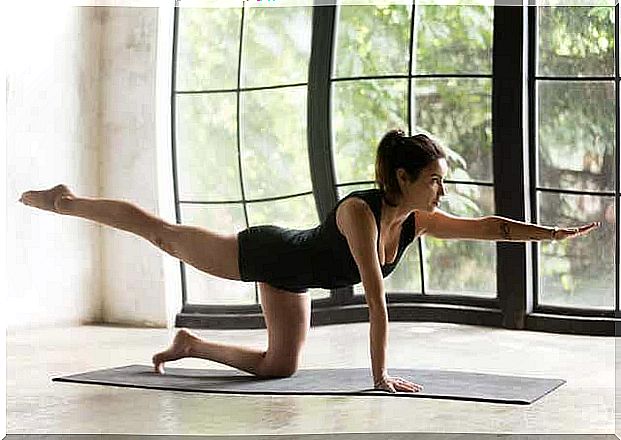Bird Dog: What Is It And How To Do It Correctly?

The Bird Dog is a bodyweight exercise that is used in multiple disciplines, although the name is sometimes different. The exercise is very complete and many muscle groups are involved. Balance and activation of the core play a key role.
The main purpose of the Bird Dog is to train the back muscles. The move also includes the glutes, trapezius, deltoids, hamstrings, piriformis, hip muscles, pecs, serratus, and triceps, as well as the abs and outer obliques. So let’s take a closer look at this exercise.
How to properly perform the Bird Dog
You perform the Bird Dog from the four-legged position, ie kneeling and with the hands on the ground. Make sure to place your hands directly under your shoulders and keep your knees under your hips. In addition, keep your back in a neutral position.
From the starting position, the next step is to straighten one leg and your opposite arm so that both limbs form a continuity with the back and are parallel to the floor. Then hold for a few seconds and slowly return to the starting position.
Then perform the same movement with the other leg and arm. The challenge of this exercise is to perform the movements while maintaining your balance.
A common way to do this is to make a fist and raise the toes, keeping the foot bent. This ensures more activation and helps with balance.
You don’t need to raise your leg and arm beyond the midline they form with your back. It is much more important to keep the position stable for a few seconds and activate all the muscles.

Keys to a good straight line
To maintain proper alignment, avoid imbalances, and achieve an effective workout, it’s important to keep the following in mind:
- The hips should remain in line without rotating the pelvis. This is the basis of this whole position.
- Your leg and arm should be lifted until they are in line with your back, not higher. Lifting them higher will cause the lumbar muscles to be overly involved. This is not necessarily a bad thing, but it is not the purpose of this exercise. In addition, activate the abdomen so that your back does not sag and activate your pelvic floor for your core.
- Also pay attention to the position of your chest and avoid sinking down. To do this, bring your shoulders down and back as much as possible, bringing your shoulder blades closer together.
- Your neck is an extension of your spine. Bring your head forward without letting it hang or forcing your gaze up.
- Perform this exercise slowly and maintain control. This will make balancing easier if needed.
If your wrists hurt, clench your fists and lean on your knuckles. In any case, avoid very soft mats, as they force a lot of bends, leaving the palm of your hand lower than your fingers.
The muscles you train with the Bird dog
The Bird Dog is a very complete exercise in which you train a lot of muscles. The following are most relevant:
- Spinae erector muscle : This is a muscle that extends from the skull to the sacrum, along the spine. The main mission of this muscle is the extension, rotation and flexion of the vertebrae.
- Rectus abdominis and musculus obliquus externus abdominis: These muscles are involved as antagonists of the erector spinae. They help maintain stability.
- Gluteus maximus (Spanish link) : It is trained by raising the leg.
- Trapezius and deltoids: These are trained when lifting the arm.
- Hamstrings, gluteus medius, gluteus minimus and obturator externus of the hip: These muscles are involved in postural stabilization.
- Pectorals, serratus and tricepts: these are also involved in the stabilization of posture.

How to Include the Bird Dog in Your Routine
Depending on the intensity of your routine and the type of training you want to do, a Bird Dog can fit into your training in several ways:
- During the warm-up, to activate the muscles and obtain a good alignment.
- As part of a series of exercises, as a complement to other exercises.
- As a cool-down exercise, before stretching.
Precautions to Consider
The Bird Dog is a suitable exercise for people of all levels. In fact, it is very useful for preventing injuries, aligning the spine and is even good in cases of chronic back pain.
However, if there is any injury or pain, it is important to avoid this exercise or, if necessary, do it under professional supervision. In cases of low muscle tone or balance problems, this exercise can even be a major challenge.
On the other hand, the Bird Dog should be avoided in case of injury or pain in the shoulder, to avoid aggravation from carrying weight or lifting the arm.








